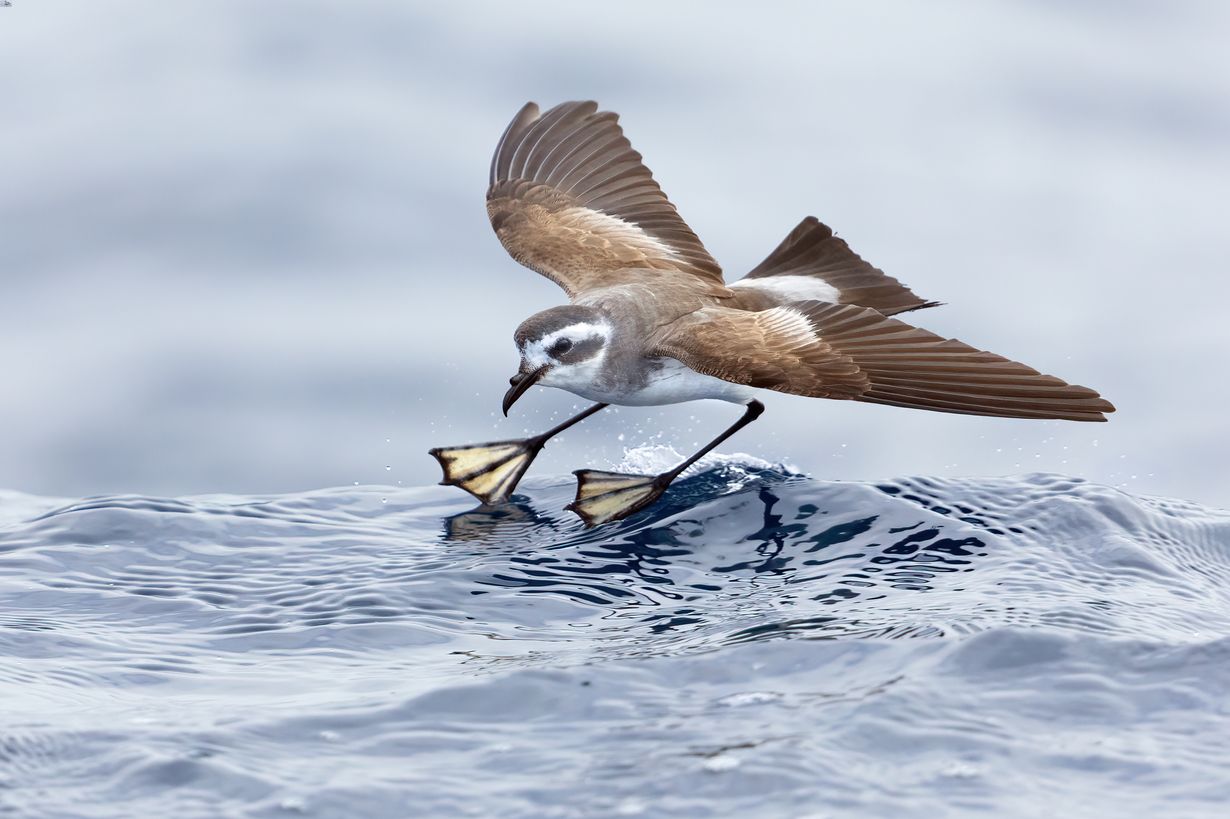
Storm Petrels are fascinating seabirds that captivate birdwatchers and scientists alike. These small, agile birds are known for their incredible endurance and unique behaviors. Did you know that storm petrels can spend months at sea without touching land? They are often seen skimming the ocean surface, feeding on plankton and small fish. Despite their small size, they are incredibly resilient, braving harsh weather conditions and vast ocean expanses. One intriguing fact is that they have a special gland to excrete salt, allowing them to drink seawater. Their nesting habits are equally fascinating; they often nest in burrows or crevices on remote islands. Ever wondered how they navigate such vast distances? Storm petrels use the stars and Earth's magnetic field to find their way. These birds are truly remarkable, showcasing nature's incredible adaptability and resilience.
Mysterious Birds of the Ocean
Storm petrels are fascinating seabirds that captivate birdwatchers and scientists alike. These small, enigmatic creatures have many intriguing characteristics that make them unique.
- Storm petrels are among the smallest seabirds, with some species measuring just 6 inches in length.
- They are named after Saint Peter, who, according to legend, walked on water. These birds appear to "walk" on water when they feed.
- Storm petrels belong to the family Hydrobatidae, which includes around 20 different species.
- They are found in oceans worldwide, from the Arctic to the Antarctic.
- These birds are known for their erratic, fluttering flight, which resembles that of a bat.
- Storm petrels have a unique feeding method called "pattering," where they hover above the water and pick at the surface for food.
- Their diet mainly consists of plankton, small fish, and crustaceans.
- These birds have a keen sense of smell, which helps them locate food in the vast ocean.
Unique Adaptations
Storm petrels have evolved several adaptations that allow them to thrive in their harsh oceanic environment.
- They have a special gland located above their eyes that helps them excrete excess salt from their bodies.
- Their webbed feet are perfect for swimming and pattering on the water's surface.
- Storm petrels have a high metabolic rate, which helps them maintain their energy levels during long flights.
- They can drink seawater thanks to their efficient salt-excreting glands.
- These birds have a unique ability to store fat, which provides them with energy during long migrations.
Mysterious Breeding Habits
Storm petrels have some of the most secretive and fascinating breeding habits among seabirds.
- They nest in burrows or crevices on remote islands, making their nests difficult to find.
- Both parents take turns incubating the single egg, which hatches after about 40 days.
- The chicks are fed a rich, oily substance regurgitated by the parents.
- Young storm petrels fledge after about two months, ready to take on the open ocean.
- These birds often return to the same nesting sites year after year.
Threats and Conservation
Despite their resilience, storm petrels face several threats that put their populations at risk.
- Predation by introduced species, such as rats and cats, poses a significant threat to their nesting sites.
- Climate change affects their food supply and breeding habitats.
- Pollution, particularly plastic waste, can be harmful to these birds when ingested.
- Light pollution from coastal developments can disorient them during their nocturnal flights.
- Conservation efforts include protecting nesting sites and controlling invasive species.
Fun Facts
Storm petrels have some quirky and surprising traits that make them even more interesting.
- Some species of storm petrels are bioluminescent, meaning they can produce light through chemical reactions in their bodies.
- They are known to follow ships, attracted by the food scraps thrown overboard.
Final Thoughts on Storm Petrels
Storm Petrels are truly fascinating birds. Their ability to survive harsh ocean conditions and navigate vast distances is nothing short of remarkable. These tiny seabirds, often called "Mother Carey's Chickens," have a unique charm that captivates bird watchers and scientists alike. From their distinctive flight patterns to their nocturnal habits, Storm Petrels offer a glimpse into the wonders of nature.
Understanding these birds helps us appreciate the delicate balance of marine ecosystems. Their presence indicates healthy oceans, making them important indicators of environmental health. Protecting their habitats ensures the survival of these incredible creatures and the overall health of our planet.
So next time you're near the coast, keep an eye out for these small but mighty birds. They remind us of the beauty and resilience of nature, inspiring us to cherish and protect our natural world.
Was this page helpful?
Our commitment to delivering trustworthy and engaging content is at the heart of what we do. Each fact on our site is contributed by real users like you, bringing a wealth of diverse insights and information. To ensure the highest standards of accuracy and reliability, our dedicated editors meticulously review each submission. This process guarantees that the facts we share are not only fascinating but also credible. Trust in our commitment to quality and authenticity as you explore and learn with us.
